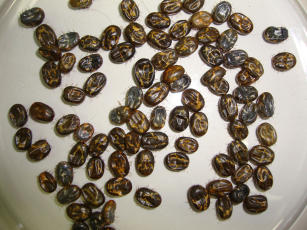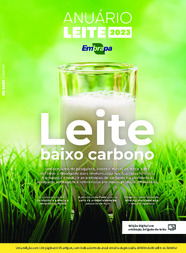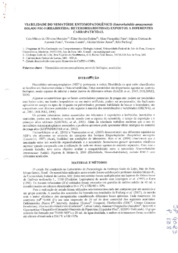Development and validation of formulations containing entomopathogenic nematodes for application on infested cattle
Development and validation of formulations containing entomopathogenic nematodes for application on infested cattle

Photo: Márcia Prata
Losses caused by the parasitism by ticks in cattle are estimated at 3.24 billion dollars annually in Brazil, largely due to procedural errors, such as the systematic and often inappropriate use of acaricides, resulting in selection and proliferation of populations of acaricide-resistant ticks. In addition, there is a growing demand for new alternatives in pest control, aiming at minimum use of chemicals, in order to preserve the environment and ensure residue-free food. In this context, biological control using entomopathogenic nematodes (NEPs) has shown promise for inclusion in integrated tick control programs. Previous research efforts conducted at Embrapa Dairy Cattle have in vitro determined species, doses, exposure times and compatibility evaluations among NEPs and chemical products, in order to initially provide information for validating the use of those combinations in cattle sprinkling strategies. However, the initial in vivo results with nematode application on experimentally tick-infested cattle were not satisfactory, so that the technological application of these entomopathogens during the parasitic phase of cattle tick remains a challenge. The greatest determinant of the failure of previous research may have been the death of NEP infective juveniles by desiccation, since, according to published records, this is the most limiting factor of NEP survival during the target insect searching phase. One possible solution to the mentioned problems would be the development of more sophisticated formulations that provide protection to infective juveniles (IJs) against drying. However, there are no studies that address the search for a formulation which gives protection to NEPs against the effects of desiccation, in order to ensure efficiency in infectivity and controlling ticks. The activities of this project were continuation of the previous project, named "Biological control of cattle tick by entomopathogenic nematodes through the corpse insect technique". This continued research included the development of 10 different formulations that were evaluated from survival tests of four species of entomopathogenic nematodes. The best formulation for each kind of NEP was then evaluated by determining the in vitro infectivity of each of the four species of NEP in its respective formulation. The best NEP-formulation combination was tested in stables, following recommendations by MAPA (Ministry of Agriculture, Livestock and Supply), resulting in a control percentage close to 20% on the first day after the spraying and significant changes in the biological parameters of the tick until the fifth day after treatment, which is considered a positive result in view of the adverse conditions that may affect the viability of nematodes.. It is hoped that the information obtained can support the design of cattle tick biological control programs, ensuring efficiency associated with reduced risk to the health of animals and consumers, and lower environmental impact.
Ecosystem: Amazonic, Coastal Areas, Campinaranas, Extreme South, Atlantic Forest, Semi-mixed and seasonal forests, Mid-North, Pantanal, Caatinga Region and Mixed forests, Cerrados Region, Pinheirais Region, Ecological Transition
Status: Completed Start date: Sun Jun 01 00:00:00 GMT-03:00 2014 Conclusion date: Tue May 31 00:00:00 GMT-03:00 2016
Head Unit: Embrapa Dairy Cattle
Project leader: Marcia Cristina de Azevedo Prata
Contact: marcia.prata@embrapa.br




